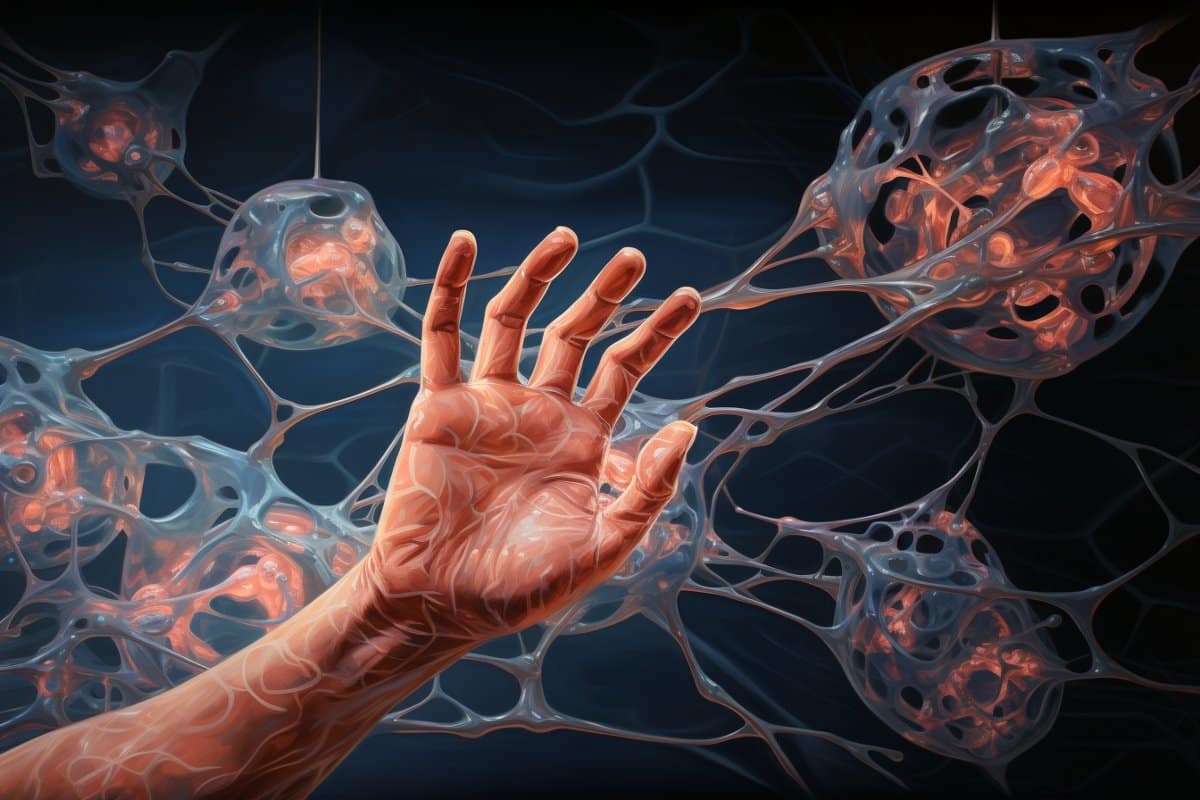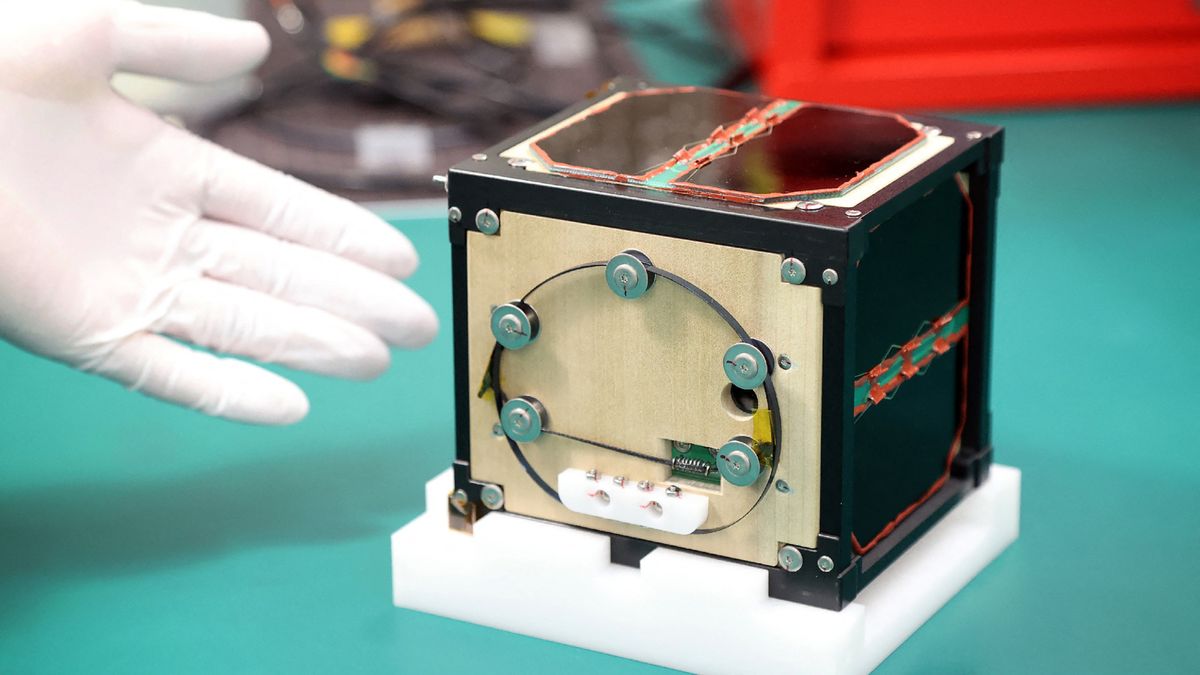Summary: Schwann cells, once known for their role as insulators around nerve fibers, are actively involved in detecting sensory stimuli such as touch and pain. This groundbreaking study reveals that specific types of Schwann cells form a network just beneath the skin’s surface, directly connecting to nerve endings responsible for sensing mechanical pressure. By using optogenetics to manipulate these cells in mice, the team demonstrated Schwann cells’ crucial role in transmitting pain sensations and their potential as a novel target for pain therapy. This discovery not only challenges the existing understanding of sensory perception but also offers promising new directions for treating pain and tactile impairments.Key Facts: Schwann cells are instrumental in detecting sensory stimuli, working alongside sensory neurons to convey pain and touch sensations to the brain. The study utilized optogenetics to show that activating Schwann cells could induce pain sensations, and blocking them reduced stimulus transmission by at least half. This research highlights Schwann cells as a viable target for developing new pain therapies, given their significant role in stimulus detection and their accessibility for treatment.
Source: MDC
Special receptor cells under the skin enable us to feel pain and touch. But Schwann cells also play a key role in detecting such stimuli, researchers at the Max Delbrück Center report in “Nature Communications.” This discovery opens new avenues for pain therapy.
The skin contains a vast number of sensory receptor endings that detect touch, heat and cold, but also potential dangers such as harmful mechanical and chemical stimuli. These sensory celle then send a corresponding signal to the spinal cord and brain. Scientists had previously thought that sensory neurons alone were responsible for this task.  Schwann cells are known to act as an insulating layer around nerve fibers. They protect and provide nutrients to neurons. Credit: Neuroscience News
Schwann cells are known to act as an insulating layer around nerve fibers. They protect and provide nutrients to neurons. Credit: Neuroscience News
However, it turns out that Schwann cells also play a vital role, as the groups of Professor Gary Lewin and Professor James Poulet from the Max Delbrück Center, along with an international research team now report in the journal “Nature Communications.”
Schwann cells are known to act as an insulating layer around nerve fibers. They protect and provide nutrients to neurons. Yet new research has shown that specific types of Schwann cells are also actively involved in detecting sensory stimuli. These Schwann cells form a network-like structure just a few micrometers below the epidermis, and are connected to the free nerve endings of sensory receptors that detect mechanical pressure. “We were surprised at the extent to which the Schwann cells participate in stimulus detection,” says Gary Lewin, head of the Molecular Physiology of Somatic Sensation Lab at the Max Delbrück Center.
The first indications of the importance of Schwann cells in pain perception (nociception) came from earlier studies by Lewin’s Swedish collaborators. This prompted Julia Ojeda-Alonso from the Lewin lab and Poulet’s lab to team up with international colleagues like Dr Laura Calvo-Enrique from the Karolinska Institutet in Stockholm – in order to get to the bottom of the matter. Using a technique called optogenetics, the researchers bred mice in which they were able to switch different types of Schwann cells on and off with different colors of light.
Without Schwann cells, the mice could not sense vibrations. All it took to convey pain sensations to the brain was to activate the Schwann cells with a light stimulus. It was not necessary to stimulate the actual nociceptors. When the Schwann cells were blocked, the transmission of stimuli by nociceptors was reduced by at least half. “We assume that technical limitations prevented us from being able to fully map the role of Schwann cells and that in some cases they actually perform most of the stimulus detection,” says Lewin.
The team next ran experiments with tactile stimuli. They focused on the Meissner corpuscles, which are vibration receptors in the skin that are closely associated with Schwann cells. The team led by James Poulet, who heads the Neural Circuits and Behavior Lab at the Max Delbrück Center, trained the mice to sense tiny vibrations with their forepaw and to report detection of these stimuli. “When the Schwann cells were switched off, it was much more difficult for mice to do this,” explains Poulet. After the optogenetic blockade was removed, their ability to sense tiny skin vibrations returned. New approaches for pain therapyThe researchers showed that the Schwann cells primarily influence the transmission of mechanical stimuli, but not heat or cold stimuli. “It may be that polymodal nociceptors, which react to mechanical, thermal and chemical stimuli, only function properly with the help of Schwann cells,” says Lewin.
The results open new avenues for understanding and treating pain and impaired touch perception. “The Schwann cells just below the surface of the skin are easily accessible to therapeutic agents,” says Lewin. “This makes them an attractive target for tackling the problem right at the root.”
About this pain research newsAuthor: Jana Schlütter
Source: MDC
Contact: Jana Schlütter – MDC
Image: The image is credited to Neuroscience NewsOriginal Research: Open access.
“Sensory Schwann cells set perceptual thresholds for touch and selectively regulate mechanical nociception” by Gary Lewin et al. Nature Communications. AbstractSensory Schwann cells set perceptual thresholds for touch and selectively regulate mechanical nociceptionPrevious work identified nociceptive Schwann cells that can initiate pain. Consistent with the existence of inherently mechanosensitive sensory Schwann cells, we found that in mice, the mechanosensory function of almost all nociceptors, including those signaling fast pain, were dependent on sensory Schwann cells. In polymodal nociceptors, sensory Schwann cells signal mechanical, but not cold or heat pain. Terminal Schwann cells also surround mechanoreceptor nerve-endings within the Meissner’s corpuscle and in hair follicle lanceolate endings that both signal vibrotactile touch. Within Meissner´s corpuscles, two molecularly and functionally distinct sensory Schwann cells positive for Sox10 and Sox2 differentially modulate rapidly adapting mechanoreceptor function. Using optogenetics we show that Meissner’s corpuscle Schwann cells are necessary for the perception of low threshold vibrotactile stimuli. These results show that sensory Schwann cells within diverse glio-neural mechanosensory end-organs are sensors for mechanical pain as well as necessary for touch perception.












